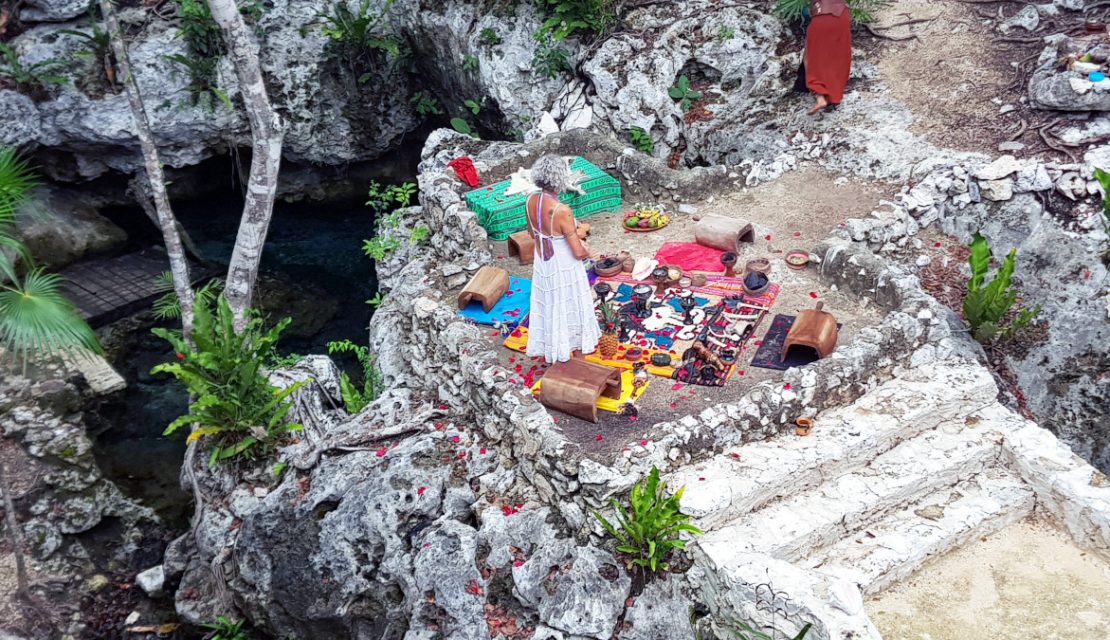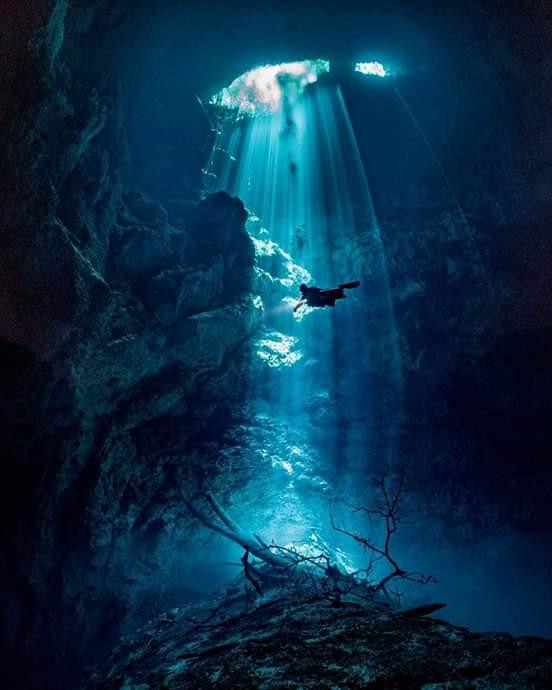Cenotes of the Riviera Maya: Nature’s Hidden Gems

Outline
- Introduction
- Definition of Cenotes
- Significance of Cenotes in the Riviera Maya
- Origins and Formation of Cenotes
- Geological processes
- Types of cenotes
- History of Cenotes in the Riviera Maya
- Cultural and mythological significance
- Exploration and discovery
- Mythological and Theological Backgrounds
- Mayan beliefs and rituals
- Cross-Cultural Perspectives
- Archaeology and Anthropology
- Modern Uses of Cenotes
- Tourism and recreation
- Ecological importance
- Future of Cenotes
- Conservation efforts
- Challenges and opportunities
- New Infrastructure Projects
- Real Estate Attraction
- Conclusion
- FAQs
Introduction
Cenotes, natural sinkholes formed by the collapse of limestone bedrock, are among the most captivating wonders of the world. Nowhere are they more prevalent and revered than in the Riviera Maya, Mexico. These mystical formations hold a unique place in both geological history and cultural significance, drawing adventurers, historians, and spiritual seekers alike.
Origins and Formation of Cenotes
Cenotes owe their existence not only to geological processes but also to a cataclysmic event that occurred millions of years ago. The Yucatan Peninsula, where the majority of cenotes are found, bears the scars of an asteroid impact that struck the Earth around 66 million years ago. This impact, known as the Chicxulub impact, was one of the most significant events in Earth’s history, leading to mass extinctions and the demise of the dinosaurs.
The Chicxulub impact crater, buried beneath layers of sediment, spans over 180 kilometers in diameter and serves as the epicenter of cenote formation. The immense energy released upon impact fractured the limestone bedrock, creating a network of fractures and faults that would later evolve into cenotes.
Cenotes owe their existence to the intricate dance of geological processes over millennia. As rainwater seeps through the porous limestone bedrock of the Yucatan Peninsula, it gradually dissolves the underlying rock, creating vast underground caverns. Eventually, the ceilings of these caverns weaken and collapse, exposing the hidden underworld to the surface.
There are various types of cenotes, each with its own distinct characteristics. Open-air cenotes, known as “abiertos,” are the most common and easily accessible, resembling pristine pools nestled amidst lush greenery. “Semi-abiertos” are partially covered by a cavern roof, while “subterráneos” are entirely enclosed within underground chambers, accessible only by descending through narrow crevices.
History of Cenotes in the Riviera Maya
Cenotes hold a profound historical significance, deeply intertwined with the cultural tapestry of the ancient civilizations that once thrived in the region. For millennia, these natural wonders have served as sanctuaries, water sources, and ceremonial sites, shaping the beliefs and rituals of indigenous peoples.
Among the most notable civilizations to venerate cenotes were the Maya, who inhabited the Yucatan Peninsula from around 2000 BCE to the arrival of Spanish conquistadors in the 16th century. To the Maya, cenotes were more than just geological formations; they were portals to the sacred underworld, known as Xibalba, where gods and spirits resided. These subterranean realms were believed to be interconnected through a complex network of caves and passages, serving as conduits for communication with the divine.
Cenotes played a pivotal role in Mayan religious ceremonies, where offerings of precious objects, food, and even human sacrifices were made to appease the gods and ensure fertility, rainfall, and bountiful harvests. The act of bloodletting, known as “auto-sacrifice,” was performed by nobles and priests, who pierced their tongues, ears, or genitals with sharp objects, allowing the blood to flow into the sacred waters of cenotes as an offering to the gods.
The significance of cenotes extended beyond religious practices to encompass daily life in ancient Mayan society. As sources of freshwater in the midst of the dense jungle, cenotes provided sustenance for communities and facilitated trade and commerce. They also served as communal gathering places, where rituals, celebrations, and social interactions took place, strengthening the bonds of kinship and community.
The discovery of cenotes by Spanish explorers in the 16th century marked the beginning of a new chapter in their history. These intrepid adventurers, driven by curiosity and a thirst for discovery, marveled at the beauty and mystery of these natural wonders. Their accounts of the subterranean realms of cenotes sparked fascination and intrigue among European scholars and travelers, who sought to unravel the secrets of these enigmatic formations.
In the centuries that followed, cenotes continued to captivate the imagination of artists, writers, and scientists, who sought to document and explore their unique ecosystems and cultural significance. Archaeological excavations conducted in and around cenotes have unearthed a wealth of artifacts, ranging from pottery and tools to human remains, providing valuable insights into the daily lives and beliefs of ancient civilizations.
Today, cenotes remain cherished symbols of Mexico’s cultural heritage and natural beauty, attracting visitors from around the world to marvel at their pristine waters and explore their hidden depths. While their significance may have evolved over time, from sacred sanctuaries to tourist attractions, the legacy of cenotes continues to endure, reminding us of the enduring bond between humanity and the natural world.
Mythological and Theological Backgrounds
Cenotes are not only geological marvels but also sacred symbols deeply embedded in the mythological and theological narratives of ancient civilizations. Across cultures and millennia, these natural formations have inspired awe, reverence, and spiritual contemplation, serving as portals to the divine and repositories of cosmic wisdom.
Mayan Beliefs and Rituals
In the cosmology of the ancient Maya, cenotes held a central place as conduits between the earthly realm and the supernatural domain. These sacred waters were believed to be gateways to the underworld, known as Xibalba, where deities and ancestral spirits resided. Cenotes were regarded as sacred repositories of life-giving energy, embodying the cyclical rhythms of creation and renewal.
Mayan rituals conducted at cenotes were imbued with profound symbolism and spiritual significance. Bloodletting ceremonies, known as “auto-sacrifice,” were performed by priests and nobles to honor the gods and ensure the fertility of the land. Participants would pierce their tongues, ears, or genitals with obsidian blades, allowing their blood to mingle with the sacred waters of the cenote as an offering to the divine.
Cross-Cultural Perspectives
The reverence for cenotes transcended the boundaries of the Mayan civilization, extending to other indigenous cultures across Mesoamerica and beyond. Among the Aztecs, cenotes were revered as symbols of the primordial waters from which all life emerged, embodying the cyclical process of creation and destruction. Similarly, the Incas of the Andean region regarded cenotes as sacred sources of water, embodying the life-giving force of the natural world.
Archaeology and Anthropology
The study of cenotes has played a pivotal role in the fields of archaeology and anthropology, offering valuable insights into the ancient cultures that revered them. Excavations conducted in and around cenotes have yielded a wealth of artifacts, including pottery, tools, and human remains, providing clues to the daily lives, beliefs, and rituals of past civilizations.
Anthropological research has shed light on the social and cultural significance of cenotes in ancient societies, revealing their role as communal gathering places, ritual sites, and sources of spiritual inspiration. By analyzing the material remains found within cenotes, archaeologists can reconstruct the religious practices, economic activities, and social dynamics of ancient communities, enriching our understanding of human history and culture.
In addition to their archaeological significance, cenotes continue to be objects of fascination and study for scientists and environmentalists. Their unique ecosystems, characterized by crystal-clear waters and diverse flora and fauna, offer valuable insights into the processes of biological evolution and ecological adaptation. By studying the biodiversity of cenotes, researchers can gain a deeper understanding of the interconnectedness of life and the fragility of ecosystems in the face of environmental change.
As such, cenotes represent more than just geological formations; they are sacred symbols that resonate with the spiritual and cultural heritage of humanity. As we continue to explore and study these natural wonders, may we honor their legacy and preserve them for future generations to cherish and admire.

Modern Uses of Cenotes
In modern times, cenotes have transitioned from sacred sanctuaries to sought-after tourist destinations. Visitors flock to the Riviera Maya to snorkel, swim, and dive in the crystal-clear waters of these natural wonders. The labyrinthine caverns and submerged tunnels of cenotes offer a surreal backdrop for underwater exploration, teeming with exotic marine life and ancient rock formations.
Beyond their recreational appeal, cenotes play a vital role in the ecological balance of the region. As oases of biodiversity in an otherwise arid landscape, they provide habitats for a diverse array of plant and animal species. Conservation efforts are underway to preserve the delicate ecosystems of cenotes and ensure their sustainability for future generations.
Future of Cenotes
As we look to the future, the fate of cenotes is intricately linked to the ongoing development and conservation efforts in the Riviera Maya region. While their natural beauty and cultural significance continue to draw visitors from around the globe, the rapid pace of urbanization and tourism poses both challenges and opportunities for the preservation of these fragile ecosystems.
Conservation Efforts
Conservation organizations and local communities are actively engaged in efforts to protect and preserve the delicate balance of cenotes and their surrounding ecosystems. Initiatives such as reforestation, water management, and waste management seek to mitigate the impact of human activity on these vulnerable habitats. By promoting sustainable tourism practices and raising awareness about the importance of conservation, stakeholders aim to safeguard the ecological integrity of cenotes for future generations.
Challenges and Opportunities
The burgeoning real estate market in the Riviera Maya, fueled by the allure of pristine beaches and tropical landscapes, presents both challenges and opportunities for the future of cenotes. The construction of luxury resorts, condominiums, and commercial developments has led to increased pressure on natural resources and ecosystems, including cenotes. As demand for coastal properties continues to rise, there is a growing need to balance economic growth with environmental sustainability.
New Infrastructure Projects
The recent inauguration of the Tulum International Airport and the ongoing construction of the Mayan Train represent significant milestones in the development of the Riviera Maya region. These infrastructure projects aim to improve transportation accessibility and stimulate economic growth in the area, attracting tourists and investors alike. However, they also raise concerns about the potential impact on local ecosystems and cultural heritage sites, including cenotes.
Real Estate Attraction
The proximity of cenotes to major transportation hubs and tourist destinations makes them prime real estate assets in the Riviera Maya. Developers are capitalizing on their natural beauty and recreational potential to create exclusive residential communities and boutique hotels catering to luxury travelers. Properties with cenote access or views command premium prices, driving demand for land parcels and investment opportunities in the region.
Conclusion
In conclusion, the future of cenotes in the Riviera Maya hangs in the balance as stakeholders navigate the delicate balance between development and conservation. While the allure of these natural wonders continues to captivate imaginations and drive economic growth, their preservation remains paramount to ensuring the long-term sustainability of the region. By fostering collaboration between government agencies, conservation organizations, and local communities, we can chart a course towards a future where cenotes thrive as guardians of Mexico’s cultural and ecological heritage.
FAQ
- Are cenotes safe to swim in?
- Yes, most cenotes open to the public are safe for swimming, snorkeling, and diving under supervision.
- Can you drink the water in cenotes?
- While cenote water is generally clean and clear, it’s not recommended to drink it directly due to the presence of bacteria and minerals.
- Are cenotes only found in Mexico?
- While Mexico is famous for its cenotes, similar geological formations exist in other parts of the world, such as Belize, Guatemala, and Australia.
- Do cenotes have any cultural significance today?
- Yes, cenotes continue to hold cultural significance for indigenous communities, who perform rituals and ceremonies at these sacred sites.
- What is the best time to visit cenotes in the Riviera Maya?
- The dry season, typically from November to April, offers the best conditions for exploring cenotes, with clear skies and warm temperatures.



















